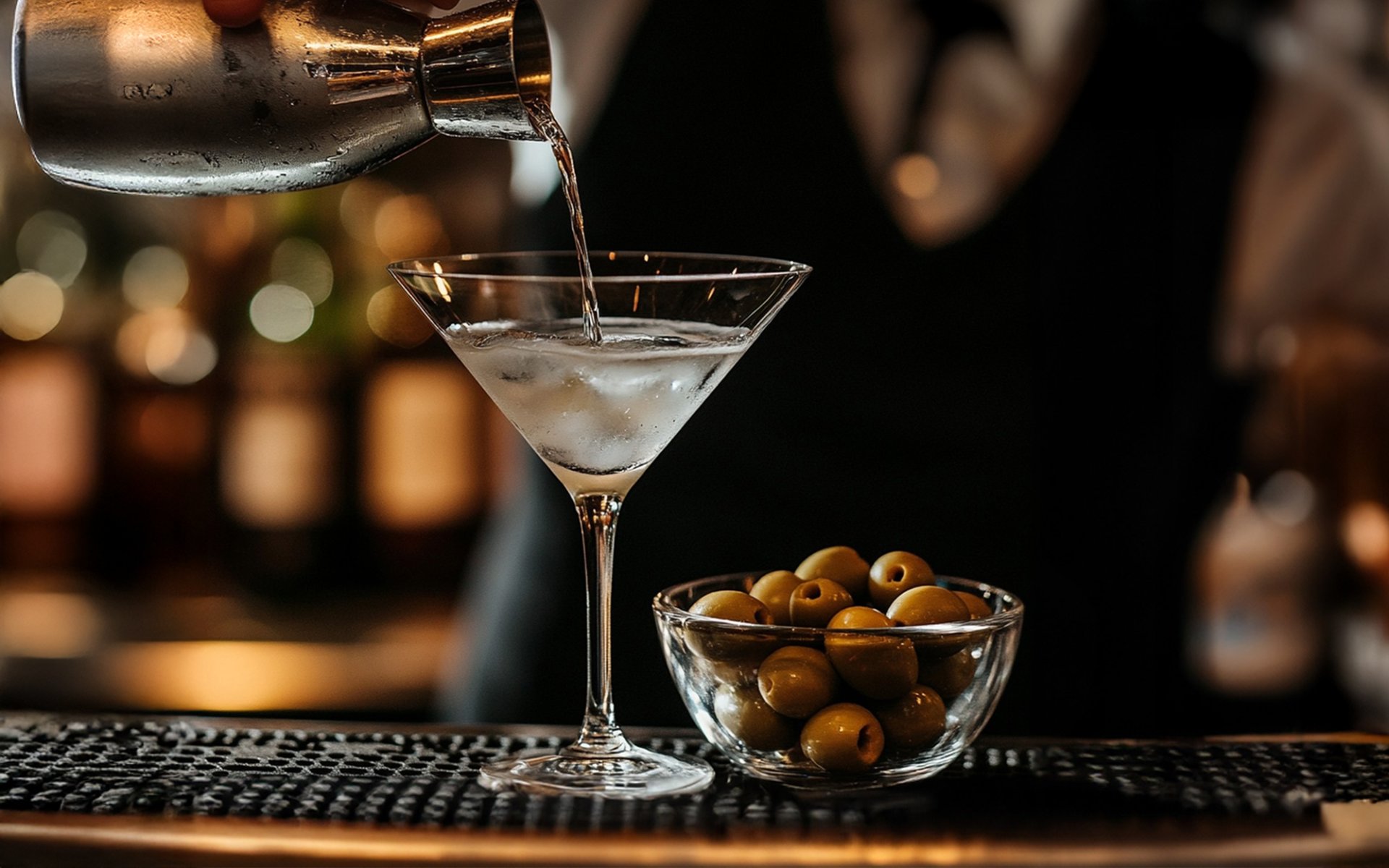Martini Cocktail

The Martini is a classic cocktail celebrated worldwide, primarily composed of Gin and Vermouth (a fortified wine flavored with various botanicals). Its elegance is further enhanced by garnishes like olives or a lemon twist. The flavor profile of a Martini can vary significantly depending on the type of Gin and Vermouth chosen, allowing for a customizable experience that caters to individual preferences. For those who appreciate quality and a sophisticated lifestyle, the Martini is an exquisite choice.
The Enigmatic Origins: Competing Theories
The true origin of the Martini remains somewhat shrouded in mystery, with several compelling theories attempting to lay claim to its creation. Each theory offers a fascinating glimpse into the cocktail's early days.
The Martinez Theory: A Tale from the Gold Rush
One of the most widely cited theories traces the Martini back to 1860 in San Francisco, specifically to the Occidental Hotel. Legend has it that a gold miner, having struck it rich, sought a special drink to celebrate his good fortune. He approached Jerry Thomas, the renowned bartender of the era, famous for his Bartenders' Guide. Thomas concocted a drink with 1 part Gin, 2 parts Vermouth, and a dash of bitters, naming it Martinez after the town that guests often ferried to. This recipe was published in Jerry Thomas's Bartenders' Guide in 1862, forming a crucial stepping stone in the evolution towards the famous Martini cocktail we know today.
The Martini di Arma di Taggia Theory: The Knickerbocker's Creation
Another theory suggests the Martini originated around 1911 at the Knickerbocker Hotel in New York, credited to a bartender named Martini di Arma di Taggia. He is said to have served this drink to the influential millionaire John D. Rockefeller, mixing equal parts Dry London Gin and Dry Vermouth, along with a hint of bitters. This theory highlights the diverse approaches to Martini creation from its very inception.
The Golden Age of the Martini : When Cocktail Culture Flourished
During the golden age of American cocktail culture, the Martini swiftly gained popularity, becoming a clear indicator of taste and social status. The burgeoning cocktail bar scene and vibrant social gatherings of the era positioned the Martini as an undeniable star.
The Prohibition Era: A Test of Unwavering Popularity
Even during the Prohibition Era in the United States, the Martini's popularity never waned. People found clandestine ways to enjoy their Martinis in "Speakeasies" or hidden bars. However, due to ingredient restrictions, many cocktails, including the Martini, had to be adapted and altered.
In this period, the Martini notably became much "Drier," diverging from its sweeter original recipes. This shift was largely due to the increased ratio of Gin to Vermouth. During a time when alcohol was illegal, Gin was one of the easiest spirits to produce illicitly and obtain. Its accessibility made Gin a popular choice for a wide variety of cocktails during Prohibition, significantly influencing the Martini's drier taste profile that persisted into later eras.
The Martini as a Symbol of Modernity and Global Fame
Upon the repeal of Prohibition, the Martini soared to become a symbol of modernity, sophistication, and an elevated lifestyle. It frequently appeared in films, literature, and was the drink of choice for numerous famous personalities.
The Martini in Literature and Celebrity Culture
Many politicians, artists, and celebrities fell in love with the Martini. Figures such as Humphrey Bogart, Frank Sinatra, Marilyn Monroe, Dorothy Parker, and Ernest Hemingway all had their own stories and associations with this iconic drink. Dorothy Parker, the American writer known for her wit, once famously quipped about the Martini: I like to have a Martini, two at the very most. After three, I'm under the table; after four, I'm under my host. This anecdote perfectly illustrates the Martini's influence and popularity among the elite and influential of the time.
The Influence of James Bond: Shaken, not stirred
In the late 20th century, the Martini's popularity spread even further, significantly boosted by pop culture. Its prominent appearance in the classic film Goldfinger in 1964, where the Martini became the signature drink of the famous spy James Bond, immortalized it. His iconic phrase, Shaken, not stirred, cemented the Martini's legendary status and global renown. However, the Martini favored by James Bond was not the traditional recipe. In the film, James Bond explicitly instructs the bartender to make his Martini with Vodka instead of Gin, leading to the birth of another popular cocktail: the Vodka Martini.
The Martini's Resurgence and Contemporary Variations
While the Martini's popularity may have slightly declined in the 1990s due to the emergence of many new drinks on the market, in recent years, it has experienced a significant resurgence, particularly among younger generations and those captivated by the growing trend of retro styles and culture. This renewed interest has brought the Martini back to prominence in the world of beverages.
The Martini Today: Endless Variations
Today, the Martini remains one of the most popular cocktails globally. Its versatility has led to numerous variations in recipes and serving styles, catering to diverse consumer tastes. The Martini has branched out into many popular variations, including:
- Dry Martini: A classic recipe that emphasizes a higher proportion of Gin to Vermouth, offering a robust and complex flavor.
- Wet Martini: A sweeter version with a higher proportion of Vermouth to Gin.
- 50-50 Martini: A perfectly balanced concoction using equal parts Gin and Vermouth.
- Perfect Martini: A more complex variation that combines both Dry Vermouth and Sweet Vermouth in equal proportions with Gin, resulting in a well-rounded and nuanced flavor.
- Extra Dry Martini: Contains very little or no Vermouth, ideal for those who prefer the pure taste of Gin.
- Dirty Martini: Includes a splash of olive brine, adding a savory, briny, and uniquely aromatic note.
- Espresso Martini: A modern twist mixed with espresso coffee, offering a rich, aromatic, and invigorating taste, perfect as an after-dinner drink.


